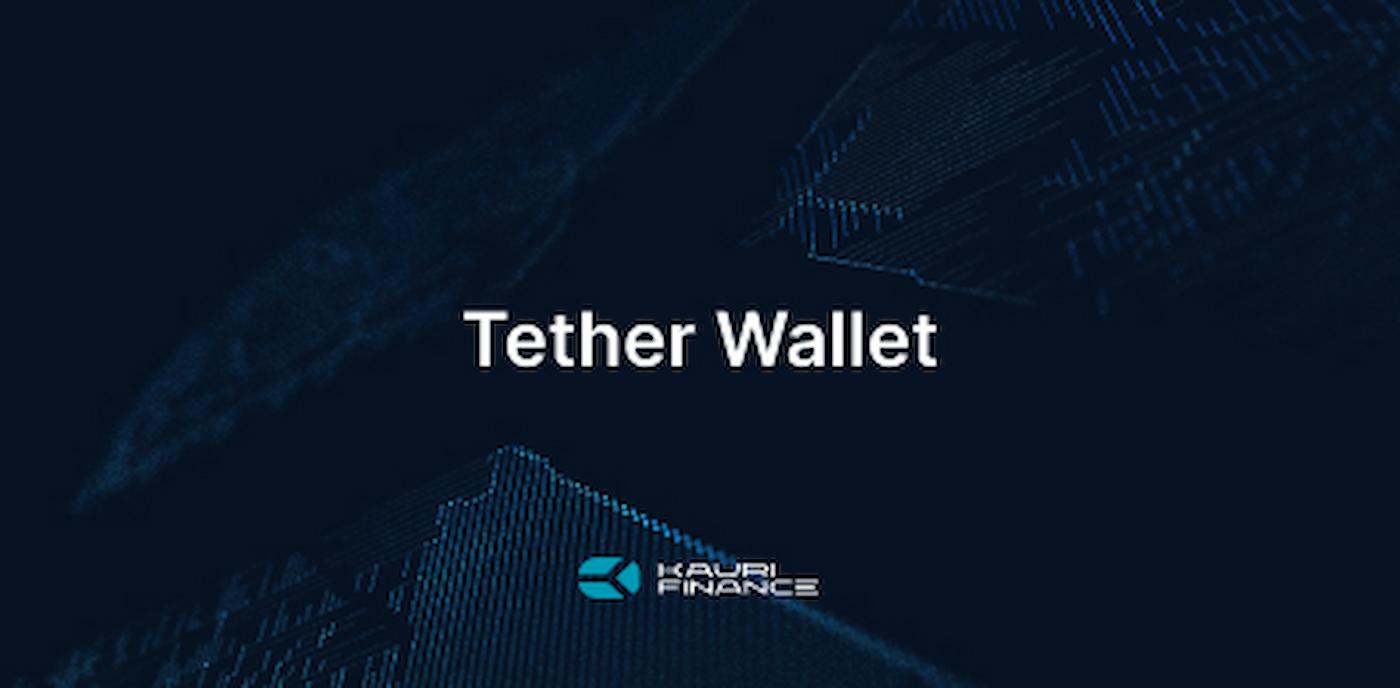
Tether Wallet

Tether, launched in 2014, is a blockchain-based platform aimed at modernizing the use of fiat currencies in digital transactions. It seeks to revolutionize traditional finance by offering a contemporary approach to money. Tether stands out by enabling users to transact with fiat currencies on the blockchain, avoiding the usual volatility and complexity associated with digital currencies. As the pioneer in facilitating the digital utilization of traditional currencies, Tether has simplified cross-border transactions across blockchain networks.
The Tether USD₮ token represents a digital version of the US dollar, leveraging blockchain technology as a stablecoin pegged 1:1 to the USD. USD₮ provides both individuals and organizations with a decentralized and reliable means of exchanging value while using a familiar accounting unit.
Tether tokens operate as digital tokens established on various prominent blockchains, including Algorand, Avalanche, Bitcoin Cash's Simple Ledger Protocol (SLP), Ethereum, EOS, Liquid Network, Omni, Polygon, Tezos, Tron, Solana, Kava, and Statemine. These transport protocols comprise open-source software that interacts with blockchains to enable the creation and redemption of Tether tokens. Each Tether token is fully backed by reserves held by Tether. As a fully transparent entity, Tether regularly discloses a record of its current reserve assets.
FAQ
What is Tether?
While commonly used interchangeably, it's crucial to distinguish between Tether and USDT. Tether serves as a centralized entity that issues stablecoins, with USDT being just one of them. Apart from USDT, Tether also introduces various other stablecoins backed by fiat currencies and commodities. Although these stablecoins may have considerably smaller market caps compared to USDT, Tether provides an array of fiat-backed stablecoins like Tether Euro (EURT) and Tether GBP (GBPT), each backed by their corresponding assets held in Tether's reserves.
But it’s not just tokenized fiat currencies that Tether puts on-chain either. It also offers commodity-backed assets too. For example, Tether Gold (XAUt) is backed by a physical commodity: gold. This physical store of gold is managed as part of Tether’s reserves. That means you can redeem physical gold bars with your XAUt directly via Tether. Essentially, Tether (the company) issues and distributes these tokenized assets. It’s also responsible for controlling the number of USDT, EURT, GBPT, or MXNT in circulation and maintaining each asset’s peg.
How to get a Tether wallet?
You have the option to utilize the KAURI crypto wallet either as a multi-currency wallet, capable of supporting over 400 different crypto assets, or as a specialized mono-wallet, such as a Tether web wallet. This flexibility allows you to securely manage all your Tether USD tokens with ease.
With the KAURI wallet app, users can swiftly establish their own portfolio without exposure to price fluctuations during exchanges. To set up a Tether wallet, download KAURI Tether wallet app. Follow the setup instructions provided and opt to create a new Tether wallet. The process is designed to be intuitive and user-friendly, ensuring a smooth experience for all users.
How to use a Tether wallet?
To create Tether (USDT) wallet, follow these steps:
- Set up mobile Tether (USDT) wallet app like KAURI Crypto Wallet onto your device.
- Create an account within the wallet app. This typically involves setting up a secure password and possibly writing down a recovery phrase.
- Transferring Tether is a fairly simple process. First, you'll need a Tether wallet address. You can usually find your wallet address within the wallet app. Then, you send your Tether tokens from your exchange account to your wallet. Another way is to receive USDT into your wallet by providing your wallet address to the sender.
- Once they're in your wallet, you can send them to the recipient's wallet address. To send USDT, navigate to the send or transfer section of your wallet app. Enter the recipient's wallet address and the amount of USDT you want to send.
- Confirm the transaction details and complete the transfer. The recipient confirms the transaction, and the Tether tokens are transferred. Just remember, Tether transfers are irreversible, so be sure to double-check the recipient's wallet address before sending any funds.
How to send Tether from paypal to another wallet?
You can't directly transfer money from PayPal to Tether (USDT) since PayPal doesn't currently support Tether. However, there's a workaround:
- Choose a Crypto Exchange Accepting PayPal and USDT: Find a reputable crypto exchange that allows PayPal deposits and supports Tether trading, for example, KAURI Crypto Exchange.
- Transfer Money from PayPal to the Exchange: Once you've selected your exchange, locate the deposit options and choose PayPal. Initiate a transfer from your PayPal balance to your exchange account.
- Buy Tether (USDT) with Deposited Funds: Once the funds are in your exchange account, go to the buying or trading section. Choose Tether (USDT) as the cryptocurrency you want to buy and use your deposited funds to complete the transaction.
How much is Tether?
Initially introduced as "Realcoin" in 2014, Tether operates with the aim of maintaining the value of each token close to one US dollar, thus easing the process of transferring actual cryptocurrency across the digital coin landscape. Referred to as a "stablecoin," Tether's value remains stable and pegged at $1.
Tether serves as a cryptocurrency striving to maintain a stable value linked to a fiat currency like the dollar or euro. This stability is achieved by holding enough actual currency or equivalents in reserves to match the value of the fiat currency. Its primary purpose is facilitating the conversion of cryptocurrencies into fiat to avoid value fluctuations during transactions. However, there are instances where Tether's value doesn't precisely align with the fiat currency it's meant to track. For example, during the November 2022 collapse of the FTX exchange, Tether briefly dropped to nearly $0.995 before swiftly recovering, sometimes even surpassing a 1-to-1 peg.
How do I add money to my Tether wallet?
To acquire Tether, you'll need a secure Tether wallet to store it. Once you have a wallet address set up, there are two primary ways to obtain USDT: purchasing it with fiat currency or exchanging some of your current crypto for USDT wallet. If you opt for the first method, you'll require an on-ramp service. These are commonly provided by centralized exchanges, facilitating the buying or selling of cryptocurrencies for fiat currencies like euros or dollars. However, before proceeding, you'll need to undergo a KYC process to meet anti-money laundering regulations.
When using centralized exchanges, you're usually required to begin by using their custodial wallet. This means that when purchasing USDT through this method, you won't have control over the private keys to your assets. Instead, the centralized entity from which you bought your crypto will manage them, and you'll access them via an email log-in. To swap your crypto, you'll also need to utilize an exchange, which can be either decentralized or centralized. However, opting for the former ensures that you maintain ownership of your assets.
How do I get a Tether wallet address?
- Launch the KAURI App.
- Tap on "Web3 wallets" and access your Tether Wallet on mobile.
- Hit "Deposit," choose the coin, and voilà! Your brand-new Tether wallet address will pop up.
